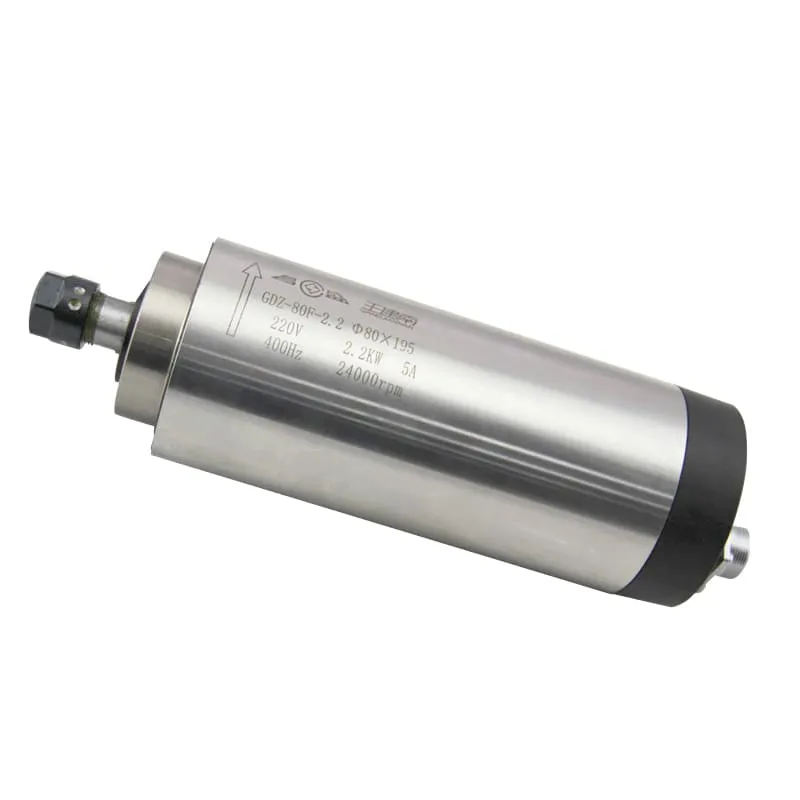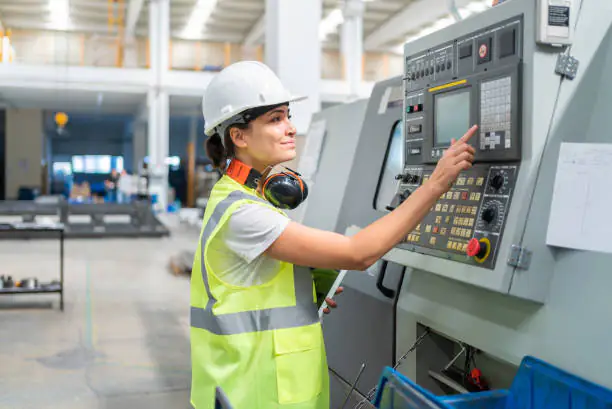How a CNC Router Works
CNC (Computer Numerical Control) routers are versatile machines that automate the process of cutting, carving, and engraving various materials. This comprehensive guide will explain the functioning of CNC routers, their components, and their role in modern manufacturing and craftsmanship.
Understanding CNC Routers
A CNC router is a computer-controlled cutting machine used for cutting various materials, such as wood, plastics, metals, and composites. It uses a rotating cutting tool and a moving platform to create precise cuts and shapes based on digital designs.

A typical CNC router setup
Key Components of a CNC Router
- Frame and Gantry: The structural backbone of the machine
- Spindle: Holds and rotates the cutting tool
- Drive System: Motors and mechanisms that move the tool or work surface
- Control System: Computer and software that manage the machine’s operations
- Work Surface: The area where the material is placed for cutting
- Dust Collection System: Removes debris during cutting
How CNC Routers Operate
1. Design and Programming
- A digital design is created using CAD (Computer-Aided Design) software
- The design is converted into machine instructions (G-code) using CAM (Computer-Aided Manufacturing) software
2. Machine Setup
- The workpiece is secured to the work surface
- The appropriate cutting tool is installed in the spindle
- The machine is calibrated and zeroed to the workpiece
3. Cutting Process
- The control system executes the G-code instructions
- The spindle rotates the cutting tool at high speeds
- The drive system moves the tool or work surface in three dimensions (X, Y, and Z axes)
- The tool cuts or carves the material according to the programmed path
4. Tool Changes and Multiple Operations
- For complex projects, the machine may automatically change tools
- Different operations (e.g., rough cutting, finishing, drilling) can be performed in sequence
5. Finishing and Inspection
- Once cutting is complete, the part is removed and inspected
- Additional finishing may be done manually or with other machines
Drive System Types
- Stepper Motors: Commonly used in smaller CNC routers
- Pros: Cost-effective, good for precise positioning
- Cons: Limited speed and torque
- Servo Motors: Used in larger or high-performance CNC routers
- Pros: Higher speed and torque, better for heavy-duty work
- Cons: More expensive
- Ball Screws: Provide precise linear motion
- Often used in conjunction with stepper or servo motors
- Offer high precision and efficiency
Spindle Options
- Router Spindle: For general-purpose work
- Example: 2.2KW ER20 Air-Cooled Spindle
- High-Power Spindle: For heavy-duty or high-speed work
- Example: 3.5KW ER20 Air-Cooled Spindles
Control Systems
- Dedicated CNC Controllers: Purpose-built for CNC operations
- PC-Based Controllers: Use a standard computer with specialized software
- Microcontroller-Based Systems: Often used in DIY or smaller CNC routers
Applications of CNC Routers
- Woodworking and cabinetry
- Sign making and engraving
- Aerospace and automotive parts
- Prototyping and model making
- Artistic and sculptural work
Advantages of CNC Routing
- Precision: Achieves high accuracy and repeatability
- Efficiency: Automates complex cutting tasks
- Versatility: Can work with various materials and perform different operations
- Consistency: Produces identical parts in large quantities
- Complex Geometries: Can create intricate designs difficult to achieve manually
Challenges and Considerations
- Initial Cost: CNC routers can be a significant investment
- Learning Curve: Requires knowledge of CAD/CAM software and machine operation
- Maintenance: Regular upkeep is necessary for optimal performance
- Material Waste: Efficient nesting and planning are crucial to minimize waste
- Noise and Dust: Proper ventilation and dust collection systems are important
FAQ
1. How does a CNC router differ from a CNC mill?
CNC routers typically have a larger work area and are designed for faster, lighter cuts on softer materials. CNC mills are generally more robust and precise, suitable for harder materials like metals.
2. What materials can a CNC router cut?
CNC routers can cut a wide range of materials including wood, plastics, soft metals (like aluminum), composites, and foam. The specific capabilities depend on the router’s power and configuration.
3. How accurate are CNC routers?
Modern CNC routers can achieve accuracies of ±0.001 inches (0.025 mm) or better, depending on the specific machine, material, and setup.
4. Can a CNC router create 3D shapes?
Yes, CNC routers can create 3D shapes through a process called 3D carving or 3D machining. This involves removing material in layers to create three-dimensional objects.
5. What’s the learning curve for operating a CNC router?
Basic operation can be learned in a few weeks, but mastering CAD/CAM software and advanced techniques can take several months to years.
6. How do CNC routers improve efficiency in manufacturing?
CNC routers improve efficiency by automating complex cutting tasks, reducing human error, and allowing for consistent production of parts. They can also work continuously, increasing production capacity.
Conclusion
CNC routers represent a significant advancement in manufacturing and craftsmanship technology, combining the precision of computer control with the versatility of routing and cutting operations. These machines have revolutionized various industries by enabling the production of complex, accurate parts with efficiency and consistency.
The operation of a CNC router involves a sophisticated interplay of mechanical, electronic, and software systems. From the initial design stage to the final cutting process, every aspect is carefully controlled to ensure precision and efficiency. The ability to automatically execute complex cutting paths, change tools, and perform various operations makes CNC routers incredibly versatile and productive.
One of the key advantages of CNC routers is their ability to handle intricate designs and patterns that would be difficult or impossible to achieve with manual routing. By utilizing computer control and multi-axis movement, these machines can create everything from detailed engravings to complex three-dimensional shapes, opening up new possibilities in fields like woodworking, sign making, and industrial design.
The impact of CNC router technology extends beyond just the cutting process. It has transformed the entire workflow from design to production. The integration of CAD/CAM software with CNC routers allows for rapid prototyping and efficient transition from digital designs to physical objects. This has significantly reduced the time and cost associated with product development and custom manufacturing.
However, it’s important to note that while CNC routers offer numerous advantages, they also require a different skill set compared to traditional manual routing. Operators need to be proficient in CAD/CAM software, understand G-code programming, and be familiar with the nuances of different materials and cutting strategies. This shift has led to changes in workforce training and education within various industries.
As manufacturing and craftsmanship continue to evolve, CNC routers are becoming increasingly sophisticated and user-friendly. Advancements in software, control systems, and cutting tool technology are making these machines more accessible to small businesses and hobbyists, while also enhancing their capabilities for industrial applications.
In conclusion, understanding how CNC routers work is crucial for anyone involved in modern manufacturing, woodworking, or digital fabrication. These machines represent a perfect blend of traditional craftsmanship and cutting-edge technology, offering unparalleled precision, efficiency, and creative possibilities. As technology continues to advance, we can expect CNC routers to play an even more significant role in shaping the future of manufacturing and artistic expression.

